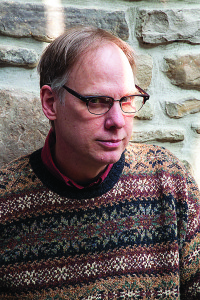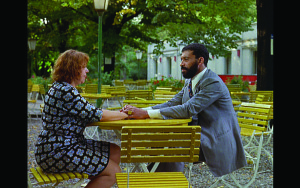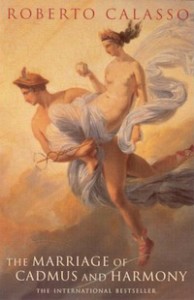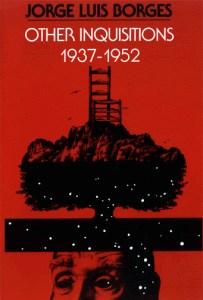The future is not what it used to be. Many of us mourn the fact that we might just be too late in addressing the disruptive and destructive future outcomes of the environmental and industrial decisions we have been making. The ice caps are melting and the time to act just may have been 50 years ago. Nothing we can do now will reverse this process. All we can do is hold on and watch to see just how bad this is going to be. Like the bumper sticker says “at least the WAR on the environment is going well”.
 I attended the Town meeting held on September 16th in the CFTA recital hall, a venue way too large for the few who attended. This meeting was for the town and campus–the “community”–to weigh in with concerns over the college’s intention to harvest trees from the college’s wooded property. The presentation was made under the description of Stewardship of our natural resources. The opening slide used a Bible verse to set the proper tone of just how caregiving this task force was inspired to be as they thoughtfully and prayerfully consider the best way to manage this important natural resource of the school. “Proper care of the forest today will help a future forest to better prosper”.
I attended the Town meeting held on September 16th in the CFTA recital hall, a venue way too large for the few who attended. This meeting was for the town and campus–the “community”–to weigh in with concerns over the college’s intention to harvest trees from the college’s wooded property. The presentation was made under the description of Stewardship of our natural resources. The opening slide used a Bible verse to set the proper tone of just how caregiving this task force was inspired to be as they thoughtfully and prayerfully consider the best way to manage this important natural resource of the school. “Proper care of the forest today will help a future forest to better prosper”.
I stated publically that although I understood the explanation, I doubted that this alone was our reason for wanting to turn trees into lumber…I suspect that the real reason is money… “there is money in them thar trees and we are foolish to let them die before we get the profit.” It was explained by the professional forester we hired that we have before us a situation of future devastation. The trees in our forest have too much common age. The canopy is too dense and the younger trees trying to grow to displace the older growth are being destroyed by more aggressive “undesirable growth”. The deer are too manifold and eating the tender good trees.
 But the money side of the evening continues to bother me. At the meeting, I kept thinking why this issue? There are so many resources at the college that need attention. It cost money to hire a consultant. The college has very tight resources. There is just no way we are going to address this issue if there is not some immediate payoff for the investment. All the arguments for the future might have some truth to them, but I still feel the real reason we are looking to our forest is for its value as lumber money, not as an inherently valuable natural resource.
But the money side of the evening continues to bother me. At the meeting, I kept thinking why this issue? There are so many resources at the college that need attention. It cost money to hire a consultant. The college has very tight resources. There is just no way we are going to address this issue if there is not some immediate payoff for the investment. All the arguments for the future might have some truth to them, but I still feel the real reason we are looking to our forest is for its value as lumber money, not as an inherently valuable natural resource.
I am not hypocritical enough to try and pass myself off as a purist on these issues. I buy lumber for art projects. I live in home partly carved out the very forest I treasure. Line up the observations and you will find me two-faced on them all. But I do want to make the case that the damage that is going to be done to our most beautiful natural resource will come at a cost to us in the present. When I pointed out the recent logging done by the Western District of the Wesleyan church of the part of the forest that runs along the edge of the college property, the forester emphasized that this was done not by a forester, but by a logger. “Don’t confuse forestry with logging”. Ok…but that sounds a little like a barber saying “It’s not me that cuts the hair, it’s the scissors”. Loggers cut trees marked by foresters. Yes, there are terrible loggers and there are environmentally responsible loggers. My hunch is that there is also a cost differential here that I doubt will be persuasive enough when cut comes to chopping that we will choose wisely.
It looks to me like there is not any way to change the mind of the college about this proposal. Thus, I am asking the students, faculty, and staff who care about the college forest to do the following:
Weigh in on this proposal. Insist that the people making these decisions do so with the least disruptive and most responsible means possible. Perhaps this will mean hiring the Amish to use horses rather than huge ground-destroying equipment to get the lumber.
Insist that we also hire an outside agency that is not trained only to look upon forest as lumber farms, but to see them in other environmentally focused terms. With an aesthetic eye and not one that describes lumber-lacking growth as junk trees but sees other ways in which the woods might be fine if left to go its own evolutionary direction…whatever that might be.
That a promise is made to carefully guard against harvesting trees on the borders of property other than the college and that those parts of the woods used now for recreation be the least harvested-meaning the ropes course, the paths and trails, and those parts most visible as we walk, run and recreate in this great natural resource.
That the harvesting happens in winter so that the noise and disruption will be least impactful on the forest use- leave ski trails open and safe.
That we also take into account the damage that might occur to other sensitive environmental habitats. That tree values be weighed against the value of salamanders, woodpeckers, and biodiversity.
Have the college only hire people that will promise this in writing and make it legally binding to not walk away from the woods once the trees are gone and to not leave it like a forest looks after artillery shells have devastated an enemy embankment.
I will feel better if more people have a chance to consider what was proposed at the town hall meeting. I am, by my own public admission, a tree hugger. I also believe that the arguments about taking care of the forest today for a future tomorrow are valid.
If we decide to still do this (I wish we would not) …how we do it is critical. The mature trees that are surely going to die out need middle growth and younger trees to be healthy and have a future.



